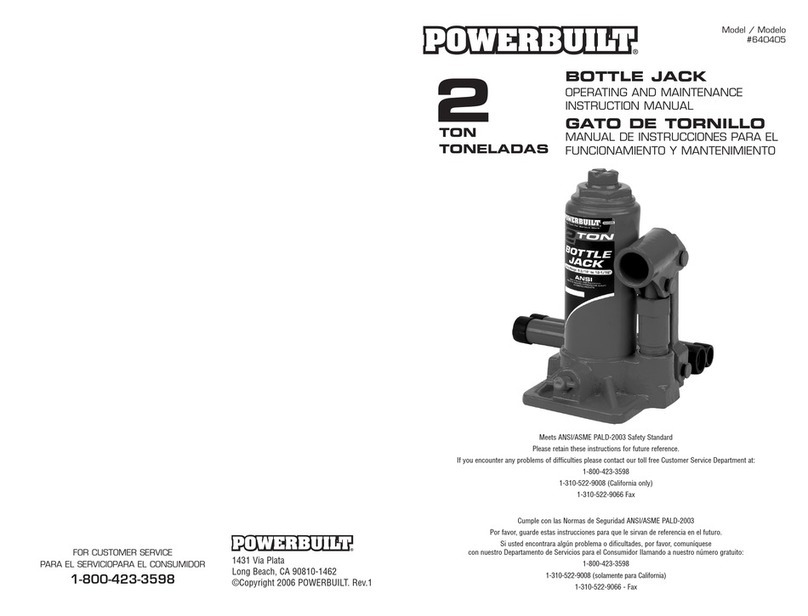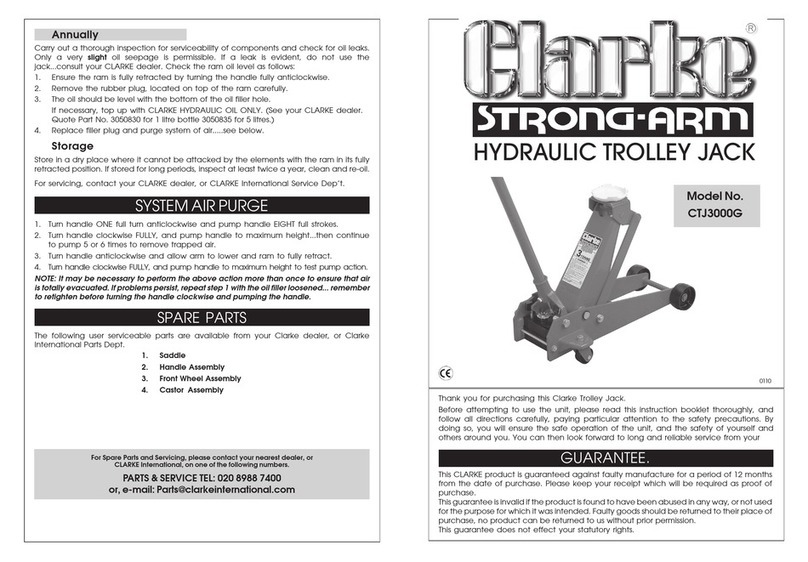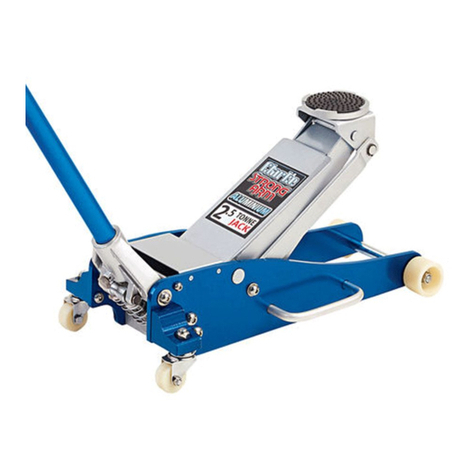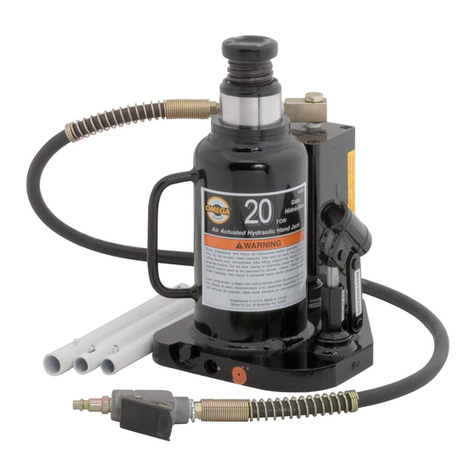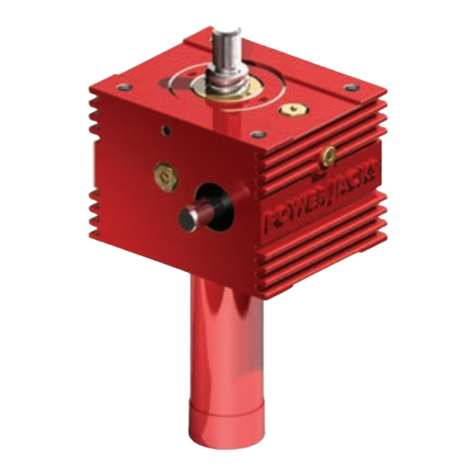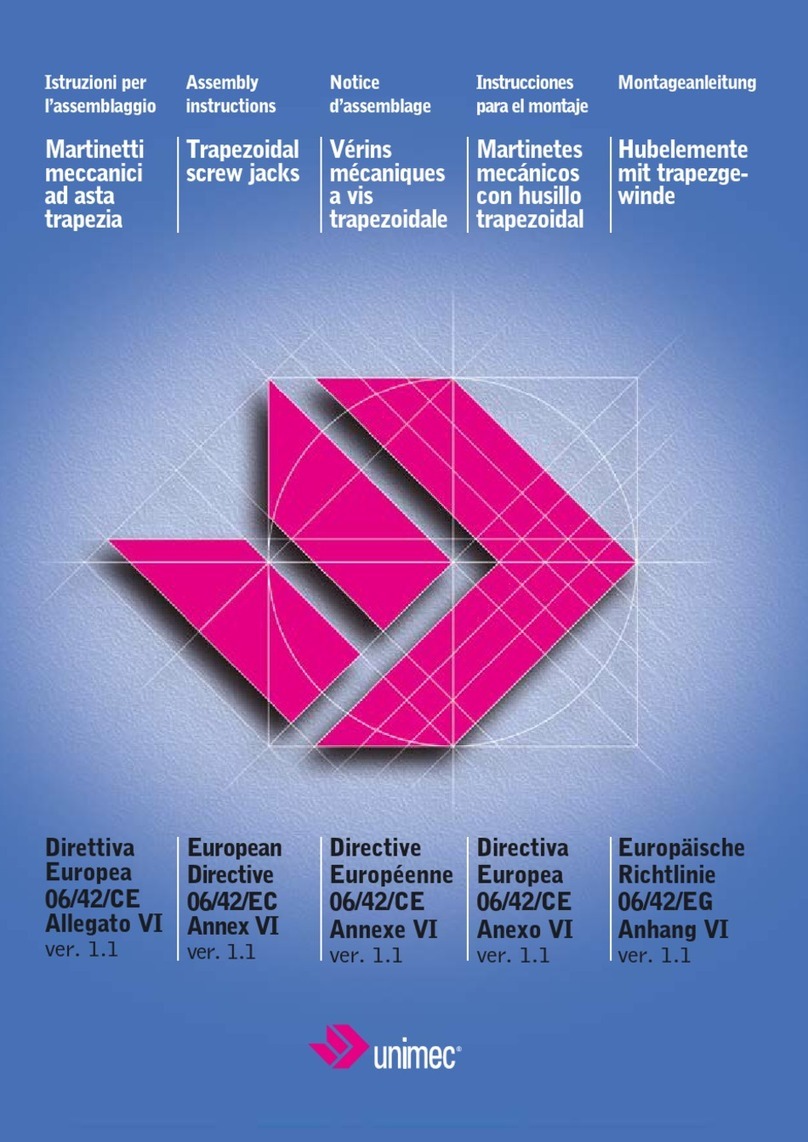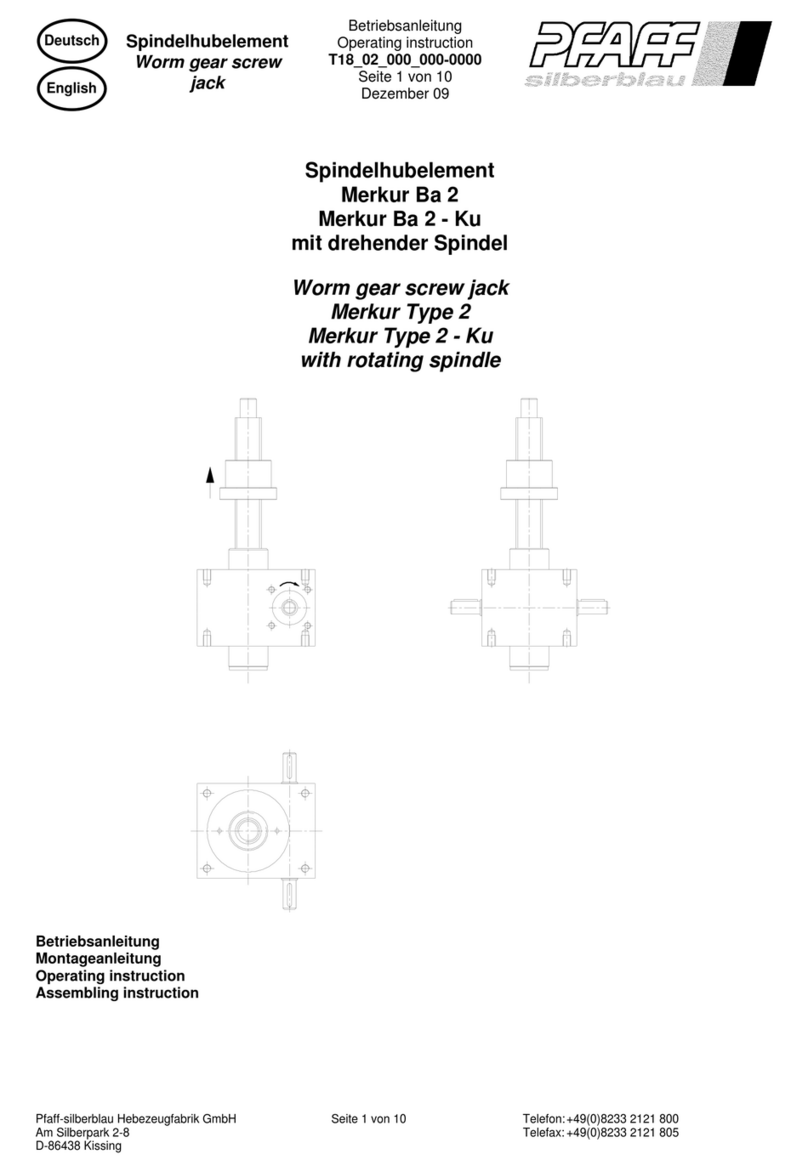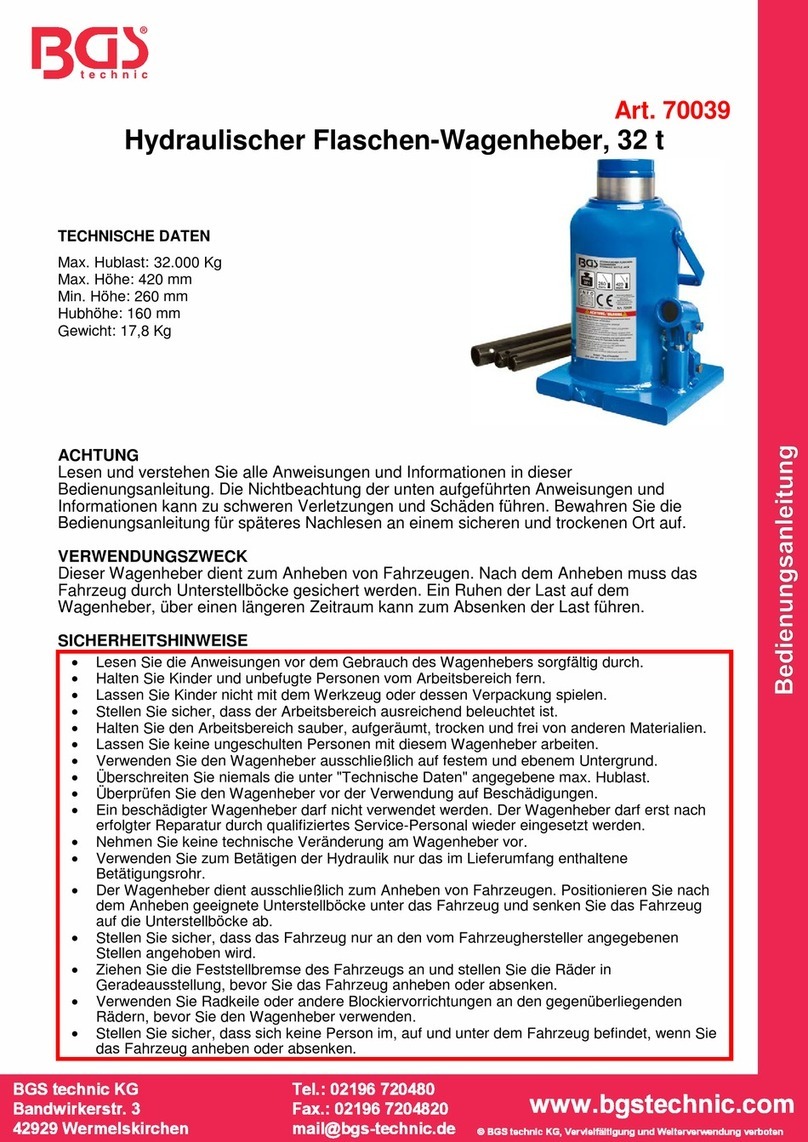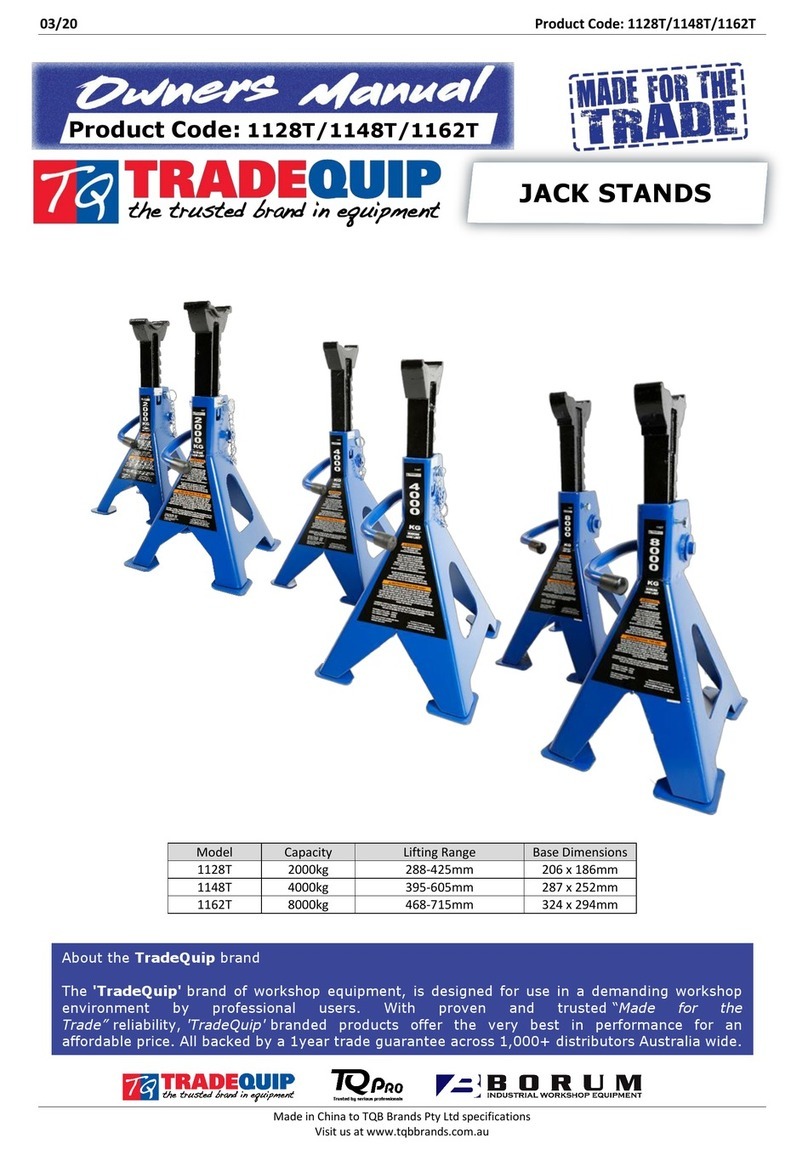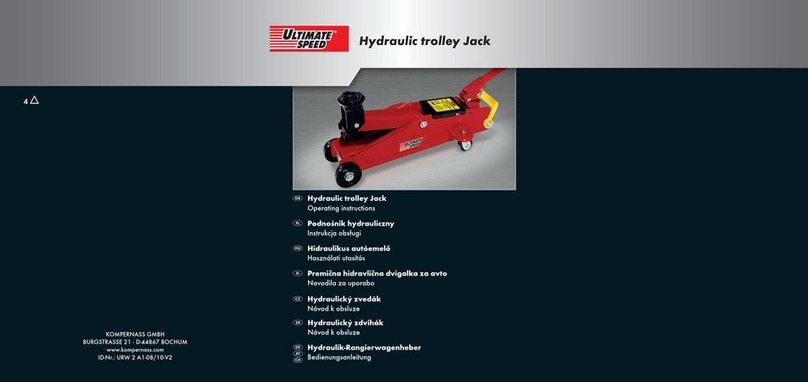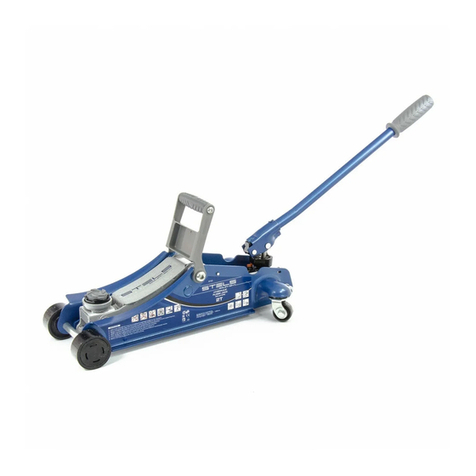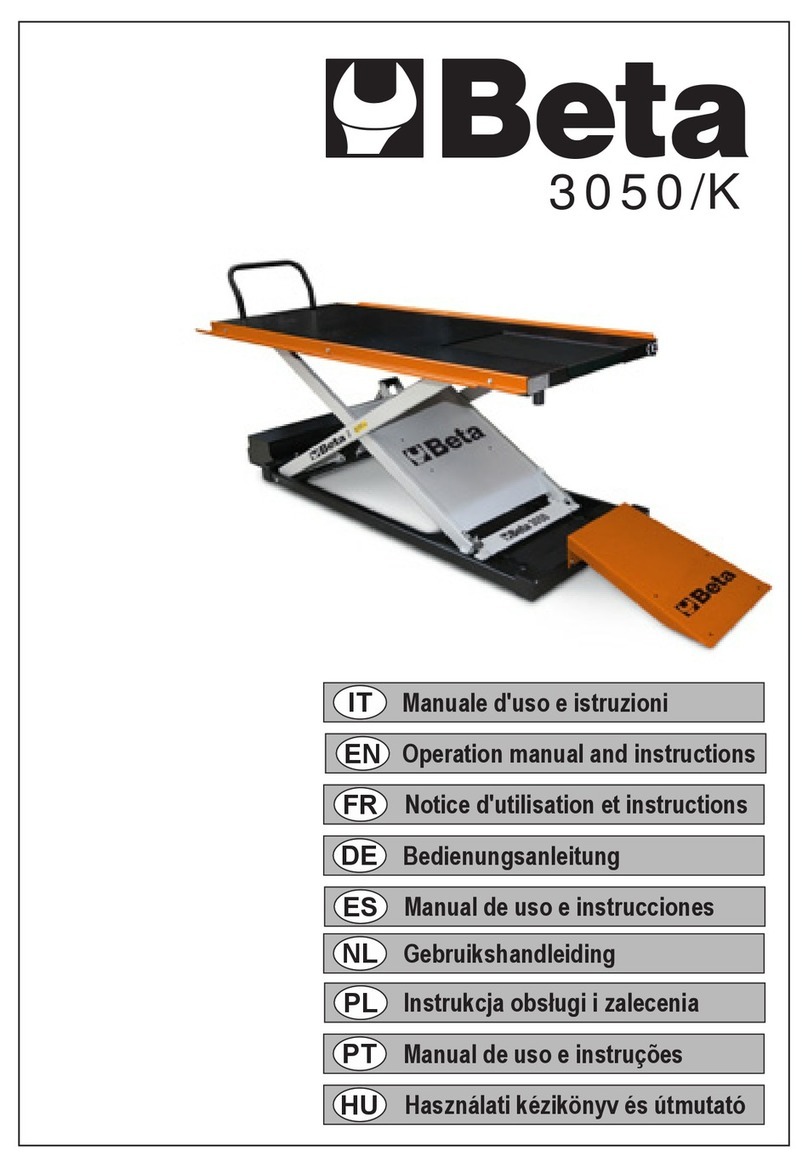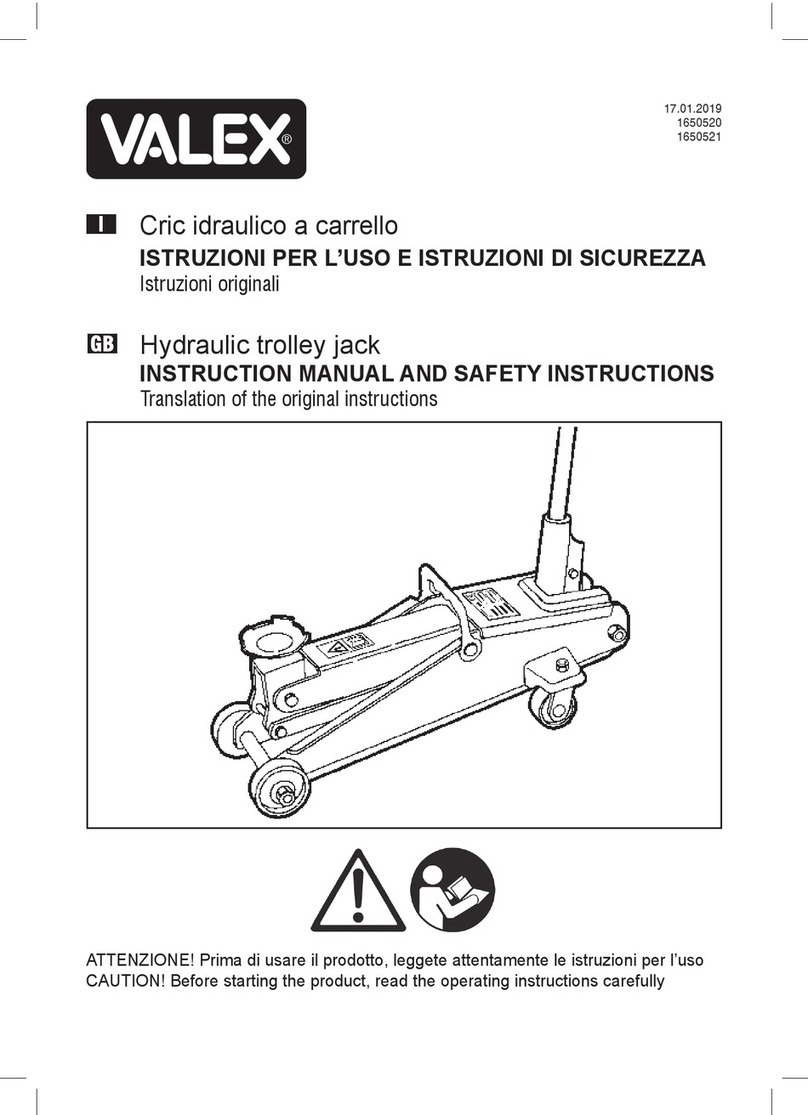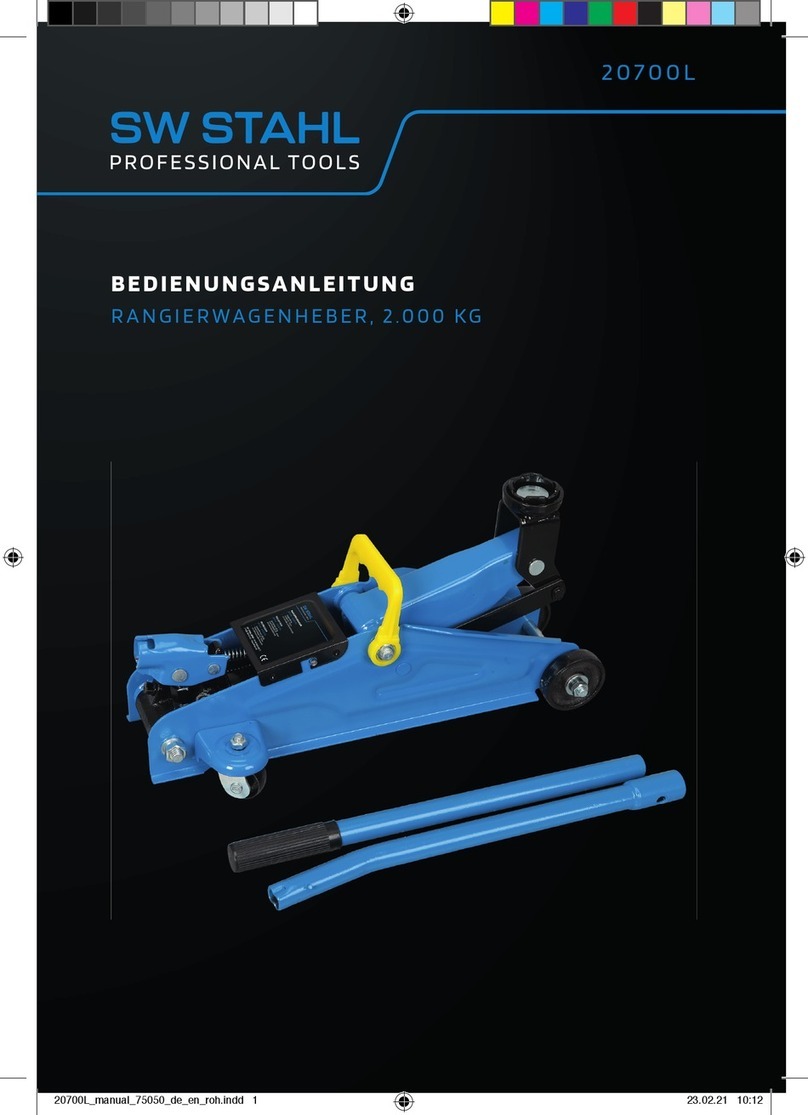
8www.powerjacks.com
Third Space Numerals (d)
The characters appearing in this space are to indicate
stroke in millimetres on all standard units, but not on
specials. This space on special
actuators helps to identify to our Engineering Depart-
ment the actual Screw Jack model produced. The
numerals do not indicate stroke or type of modication
performed on special orders.
Sufx (e)
B - Indicates bellows boot required to protect lift-
ing screw.
G - Secondary guide for the lifting screw.
L - Single-end worm shaft extension on left-hand
side only.
R - Single-end worm shaft extension on right-
hand side only.
1 - Gear ratio option-2 required.
X - Supplied without bottom pipe, but with guide
bushing.
Note 1. All sufxes (e) that do not conict with another
may be used in series against one Screw Jack.
Capacity and Series Designations (c)
Upright Translating Screw Jacks
E2625 E2501 E1802 E1805 E1810 E1820 E1830 E1850 E18100
5 10 25 50 100 200 300 500 1000
Inverted Translating Screw Jacks
Decrease the upright model number by 1, e.g. 1804, 50 kN inverted Screw Jack.
Rotating Screw Jacks
Increase the upright model number by 1, e.g. 1806, 50 kN rotating Screw Jack.
Anti-Backlash Screw Jacks
Replace the rst digit in the model number with a 4, e.g. 4805, 50 kN anti-backlash Screw Jack.
2.0 Example
KME1819-300-BR, 200 kN inverted keyed translating machine screw jack with top plate, 300 mm of stroke, bel-
lows boots tted to protect lifting screw and a single ended worm shaft extension on the right-hand side only.
K ME 1819 300 BR
↓↓↓↓↓
(a) (b) (c) (d) (e)
↓↓↓↓↓
Prex Basic Model Series No. Travel of Unit (mm) Sufx
Product Code
Prexes (a)
S - All Stainless Steel Screw Jack.
K - Keyed Lifting Screw
Basic Model (b)
TE - Threaded end on lifting screw (standard)
ME - Top Plate on end of lifting screw.
CE - Clevis End on lifting screw.
PE - Plain end, with no machining on end of lifting
screw.
DE - Inverted rotating screw jack.
UE - Upright rotating screw jack.
CCE - Screw Jack with double clevis mounting
arrangement.
Note
1. For E-Series Screw Jacks with plain ended lifting
screws consult Power Jacks.
2. For Stainless Steel Screw Jacks with varying mate-
rials and/or platings consult Power Jacks.
3. For external keyed guides consult Power Jacks.
2

